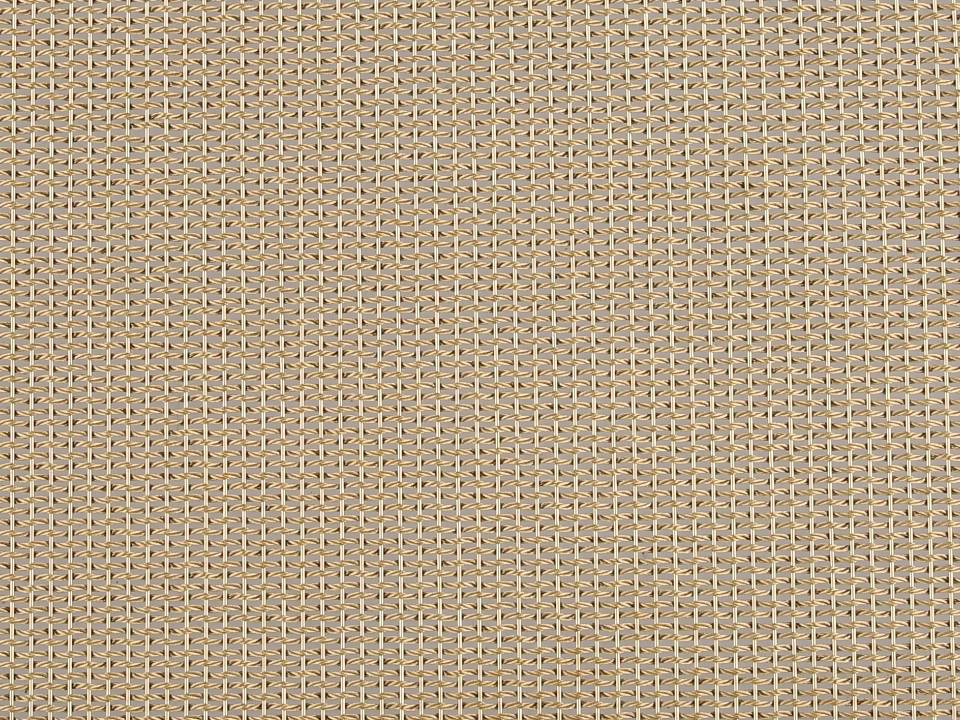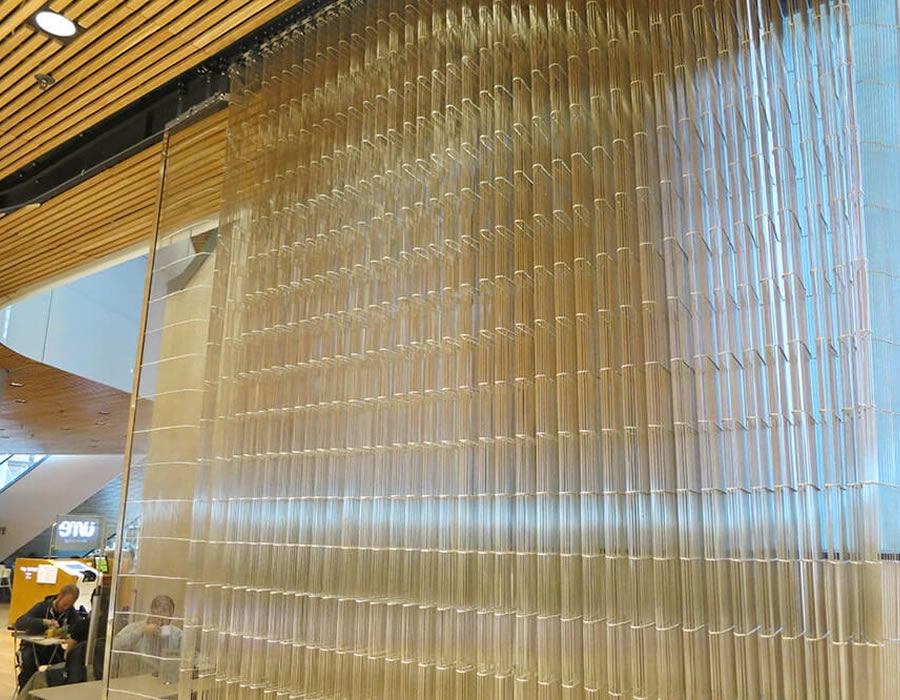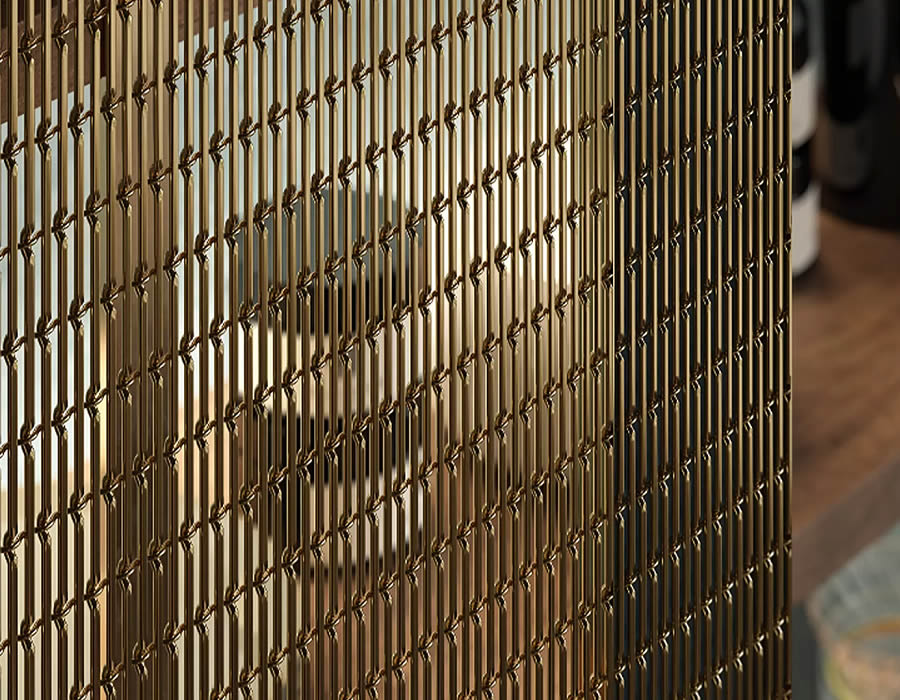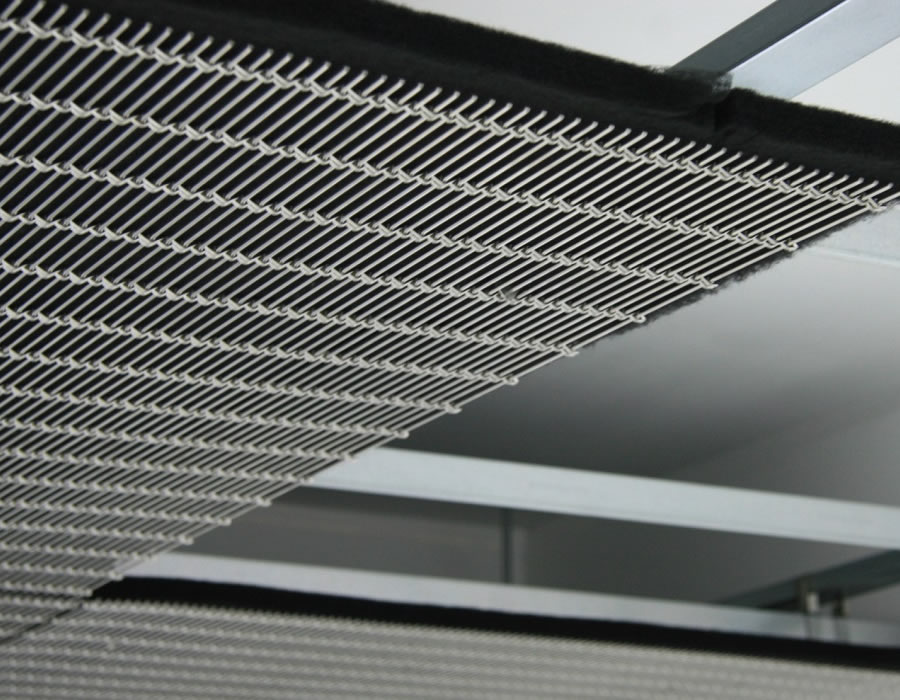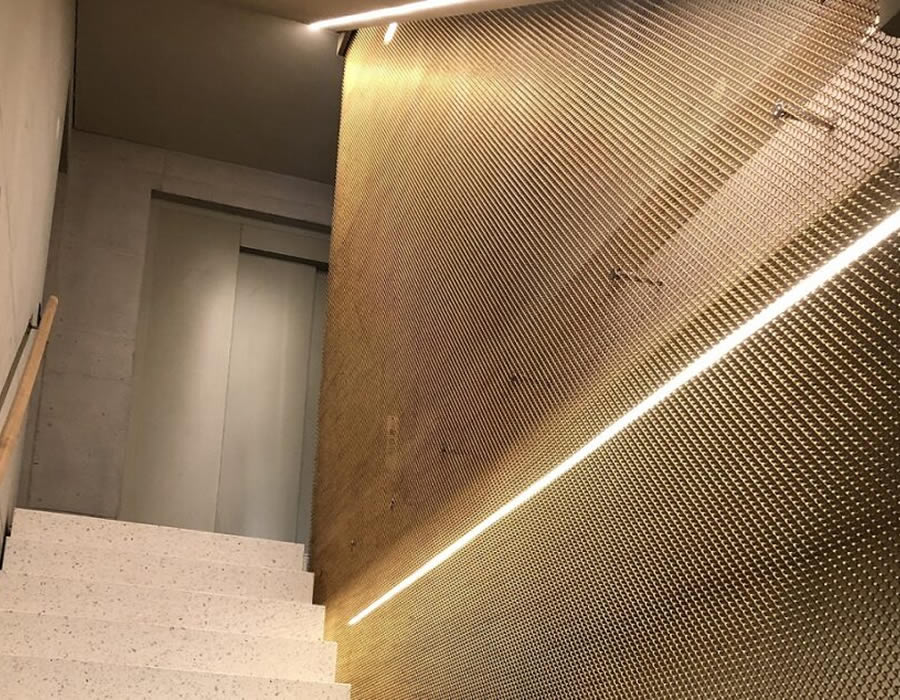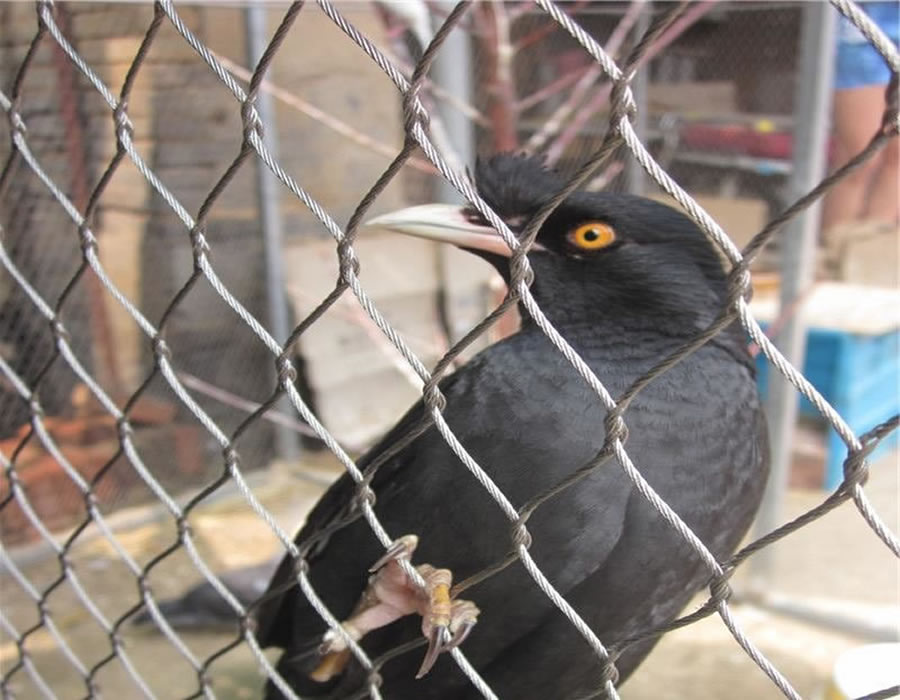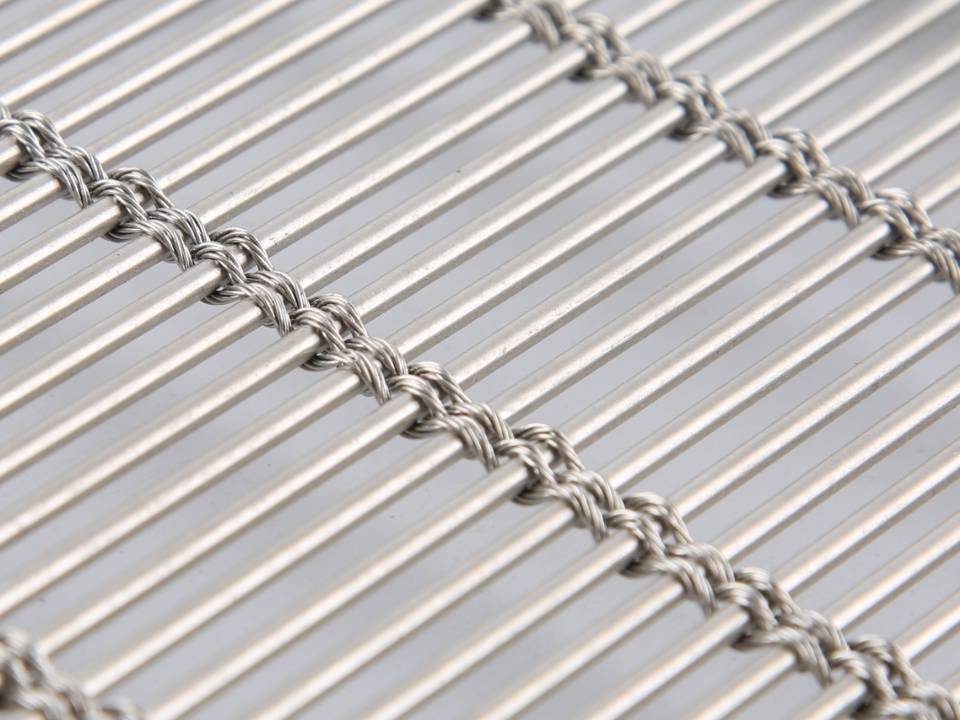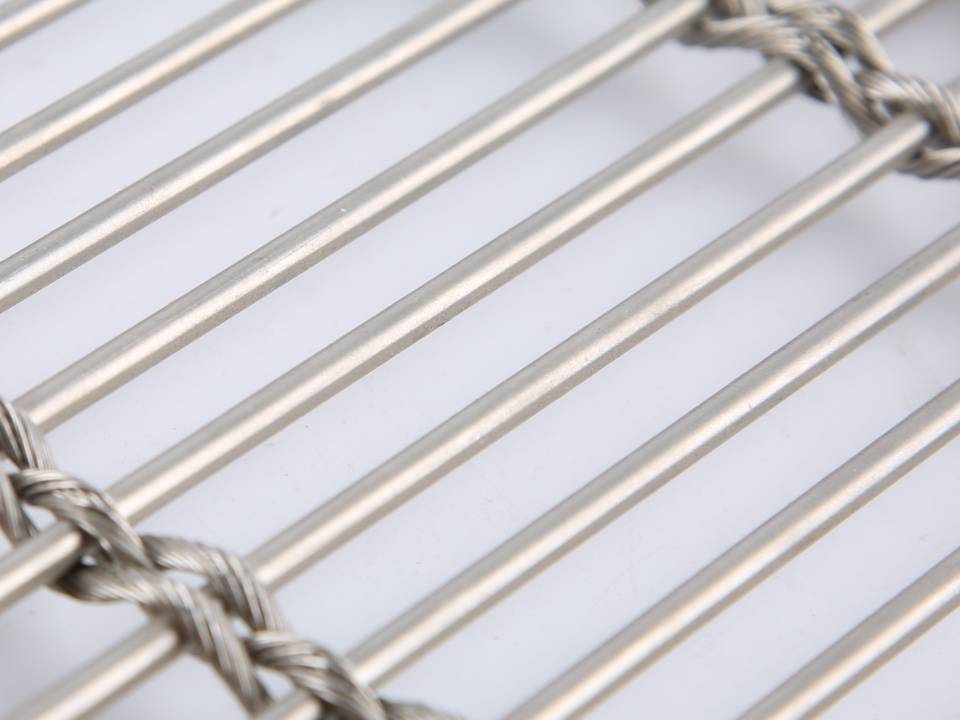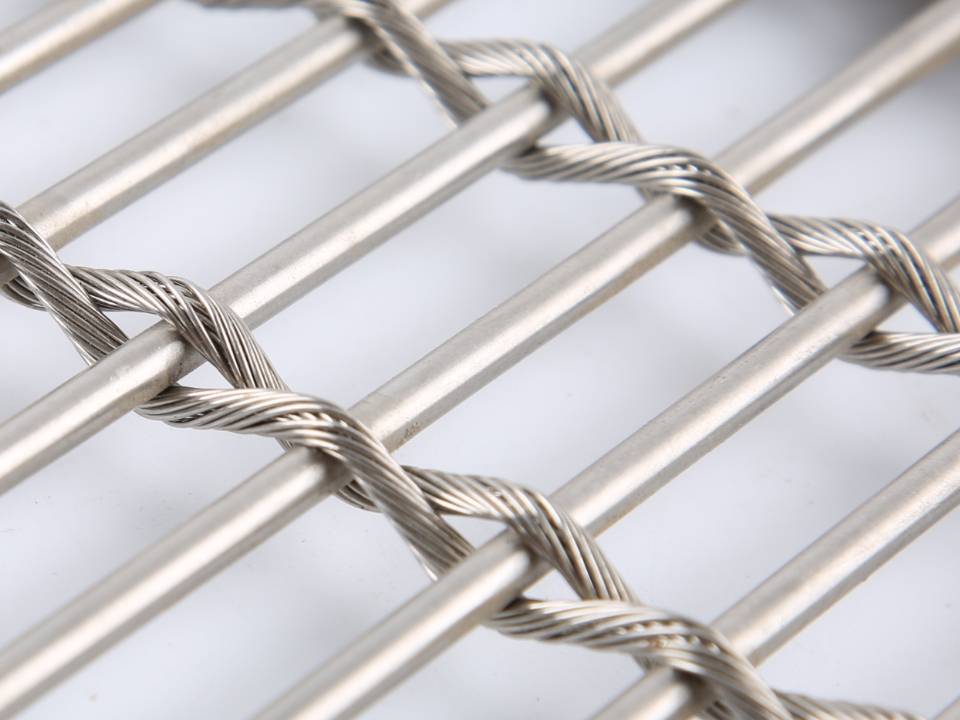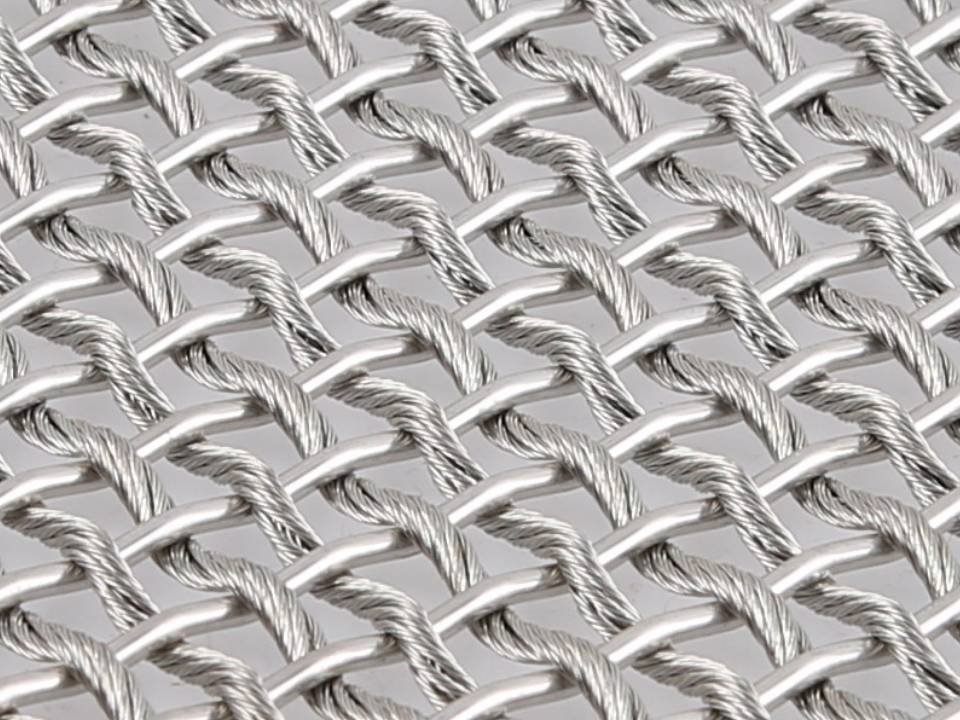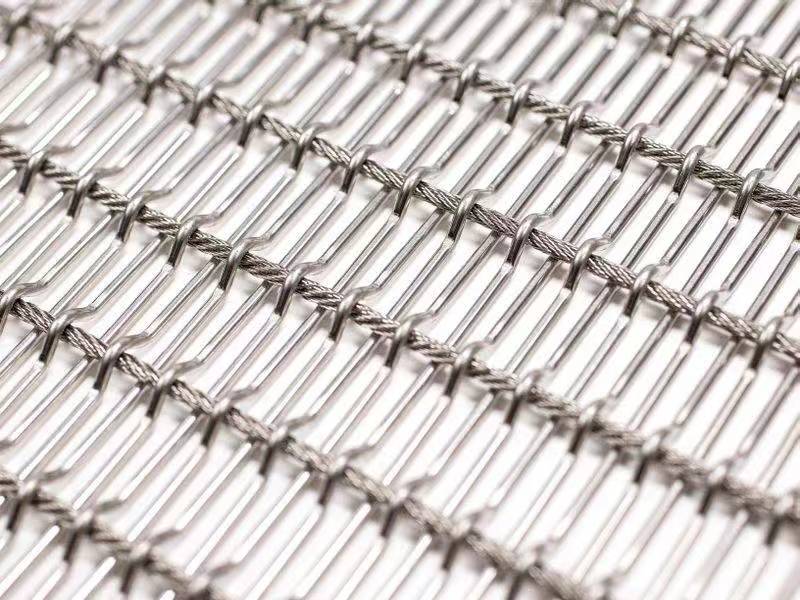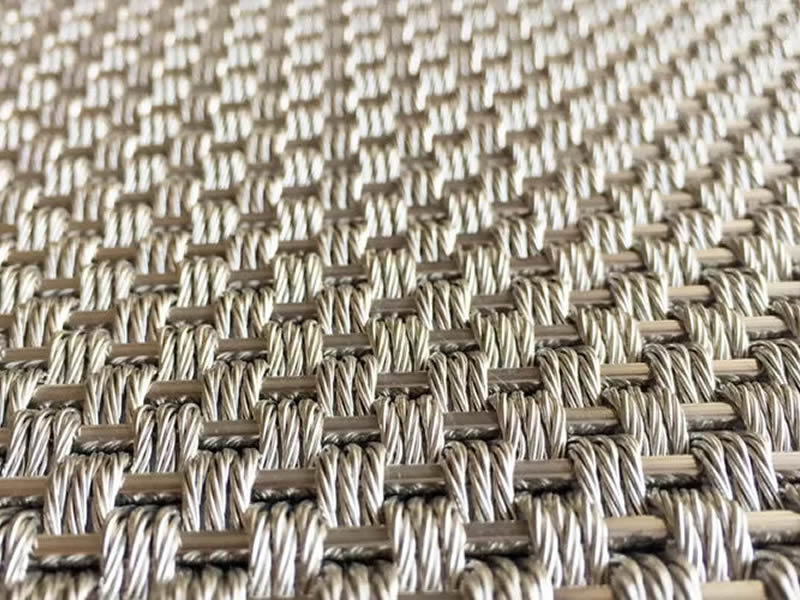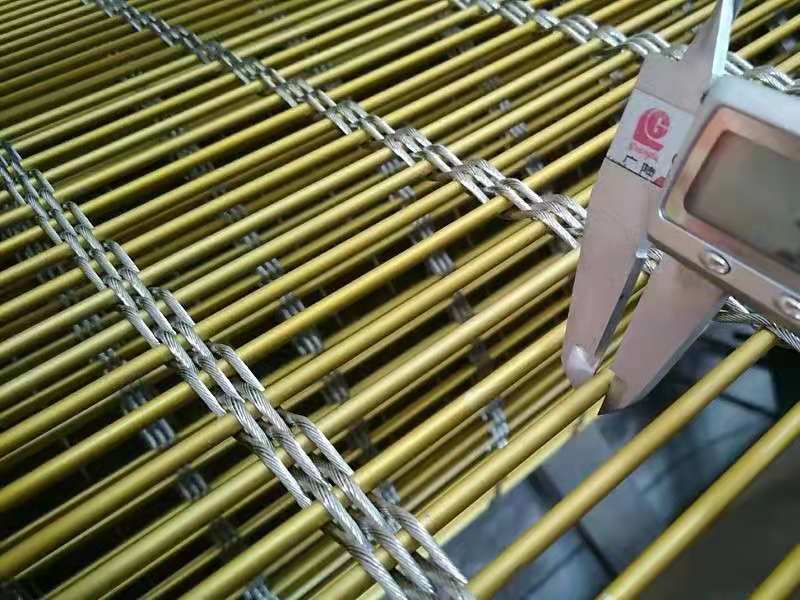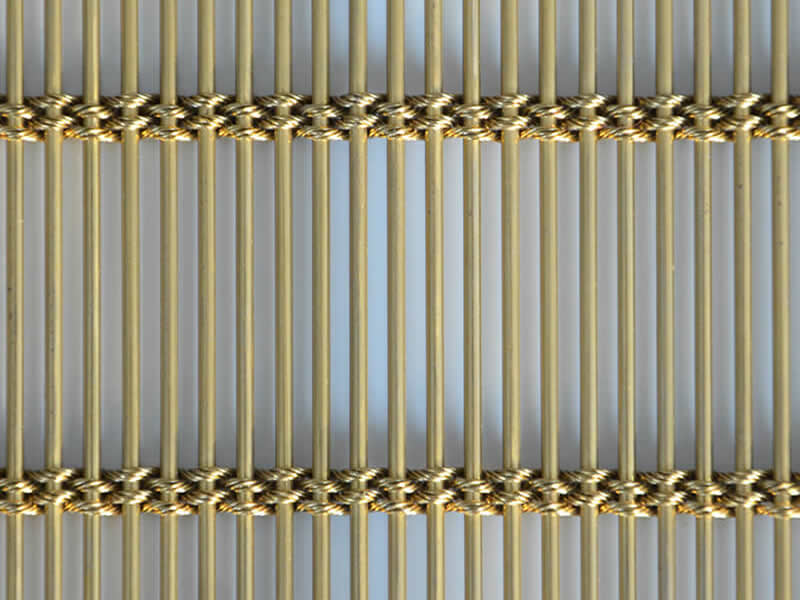PVDF Woven Wire Drapery - JD108
Woven Wire Drapery is also called Flexible metal drapery. It is mostly made of non-corrosive stainless steel rope and wire. With its ability to adapt to various design styles and architectural concepts.
- Payments: This supplier also supports L/C, T/T, Western Union, Money Gram payments.
Specifications:
Material: Stainless Steel304 316.
Rod wire diameter (a): 1.5mm
Rope diameter (b): 2.0mm x 1
Rod wire pitch (c): 2.5mm
Rope pitch (d): 2mm
Cross rod type: straight
Overall thickness: 5.5mm
Open area: 40%
Weight: 8kg/m2
Max Width: 4m
Max Length: 15m
Surface treatment: PVDF color surface finished
Wire Mesh Colors: natural colors, bronze, antique brass and brass,Silver, golden, red, purple, blue, green, bronze, gray, etc.
Note: Special size and specifications can be made according to customers requires.
Features:
Never rust.
No or little maintain.
High durability and flexibility.
Beautiful appearance and various color option
Woven Wire Fabric used as facade, not only play a role in decoration, also can use opening area of architectural metal mesh to block part of the sun.
Applications:
Woven wire drapery is a very famous architectural mesh. It is competent for interior and exterior ornamentation. For interior, it can be used as room dividers, decorative curtains and ceiling curtains. For exterior application, it is an ideal alternative for building facade, column cladding, wall coverings. Due to its narrow space between two neighboring wires, it is a superior choice of protective device for stairs, elevator cabs, rails and balustrades.




